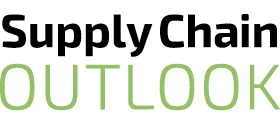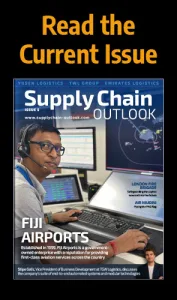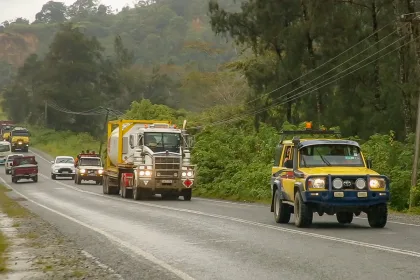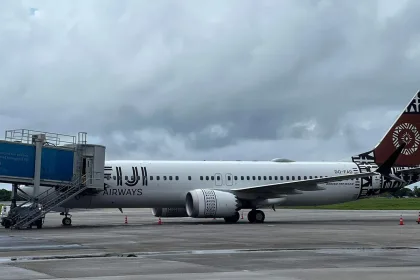LIFE-SAVING INNOVATIONS
As well as regulatory reform, there is a significant focus on innovations, several of which have more than proven to save time, money, and most importantly, lives.
Sophisticated fleet management systems (FMS), for example, allow information associated with heavy vehicles and other related assets to be visualised, monitored, and managed.
More businesses have turned to FMS as technology has advanced, as they provide numerous benefits such as complete visibility across operations, streamlined day-to-day tasks, improved maintenance planning, and the identification of deeper issues that impact fleet and business performance, to name a few.
Fleet management has transformed as the evidently positive impacts an efficient fleet can have on key variables such as people, vehicles, and operations are realised by adopters of the technology.
Cost savings are widely agreed to be the key driver behind developing a fully functioning FMS, which can also include the management of drivers, the environment, and compliance.
The latter is just as important and a fundamental necessity for safe and successful fleets, most of which have the same issues to address in terms of compliance.
For example, vehicles must be safe, maintained, and properly equipped for the nature of their use to ensure roadworthiness, as well as being suitably taxed and insured. This requires a robust service and maintenance system, regular internal inspection policies, and the strict management of warranties and policies.
Risk assessments, meanwhile, involve considering the risks of routes that drivers are asked to travel, operations they need to undertake, and compliance with safe and legal driving times.
Drivers also require licences that are up to date and comply with the vehicle they are at the wheel of. From a health and safety point of view, they additionally need to drive and conduct themselves appropriately on the road.
Ultimately, however, employers are responsible for the health and safety of their drivers. Whilst this involves many of the aforementioned issues, it is a fundamental starting point when maintaining compliance as part of FMS.
In most cases, this involves investing in software and establishing a database that collates all-important compliance factors, such as key dates, requirements, and criteria, and can trigger action through notifications and alerts.
Fleet compliance is ultimately a continuous process that demands visibility, organisation, and consistent policies to avoid fines, penalties, safety violations, excessive admin costs, and significant delays or disruption.
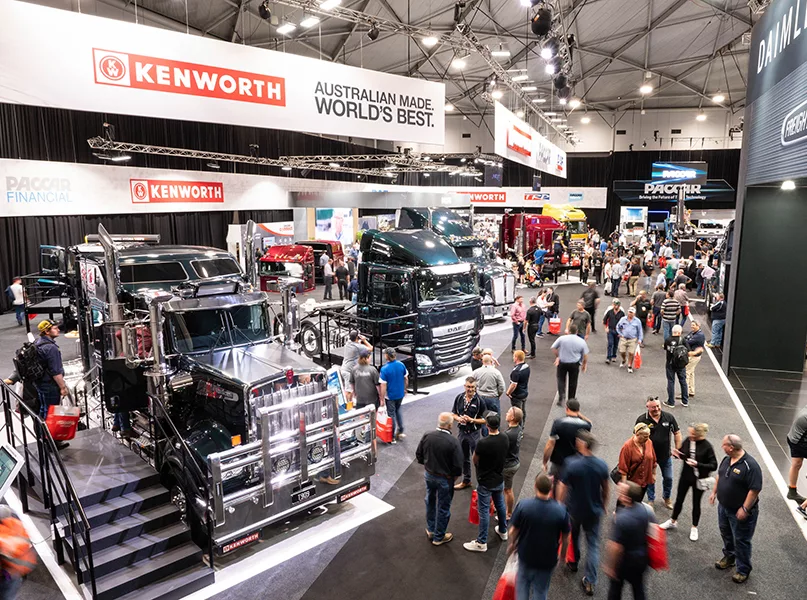
SAFETY STANDARDS
In-vehicle monitoring systems (IVMS) are another innovation that is considered integral to achieving effective and successful fleet management.
IVMS consists of electronic devices installed in a vehicle to monitor driver activities and identify potentially dangerous behaviours, such as excessive speed, harsh braking, and rapid acceleration.
In response, these sophisticated systems can provide warnings and evidence of a wide range of undesirable driving practices. Other behaviours that are monitored include tailgating, rough cornering, and driver drowsiness.
The technology is therefore crucial to the monitoring, maintenance, and improvement of road and driver safety standards in heavy vehicles, which pose significant risks to public safety due to their sheer size and weight as minor errors can have more serious consequences compared to light vehicles.
Vehicle operators and other road users have an increased chance of detecting, avoiding, and surviving crashes thanks to advanced safety technologies, which will continue to be developed in the short-to-medium term and must be monitored by transport regulators.
As well as fleet management, compliance, monitoring, and safety systems, electronic work diaries (EWDs) are another innovation that is used to record the work and rest times of heavy vehicle drivers.
EWDs are approved by Australia’s National Heavy Vehicle Regulator (NHVR), whose vision is to cultivate a safe, efficient, and productive heavy vehicle industry that serves the needs of the country.
The devices can be used as an alternative to keeping records in a written work diary. Drivers, transport operators, record keepers, and authorised officers still have the same obligations as they do for a written work diary when they are using EWDs, however they can automate many of these functions, making day-to-day operations faster and easier.
Transport operators have the option to either develop their own device, buy one off-the-shelf, or adopt an EWD that can be integrated with other regulatory systems.
In any case, the technology must meet specified performance requirements to be approved for operation, whilst appropriate training is needed for transport operators as well as drivers to inform them of the correct use of their EWD.
At all times, EWD approval holders, record keepers, and drivers must ensure that the devices function in accordance with the standards and conditions set by NHVR.
Information collected by an EWD can be provided to numerous recipients, such as the driver to check that the record information is correct, the driver’s record keeper to fulfil record-keeping obligations, and an authorised officer to confirm the driver is complying with work and rest regulations.
In addition to the general duty to not drive a heavy vehicle whilst fatigued, drivers must comply with certain maximum work and minimum rest limits.
Parties in the supply chain have to undertake reasonably practicable measures to prevent drivers from exceeding these limits, similar to occupational health and safety laws.
This means that heavy vehicle drivers must be allowed to stop if they are at risk of exceeding the specified limits and make alternative arrangements.

AUTOMATION PROGRESS
The development of automation is also well underway, as evidenced by the work of the likes of Tesla, General Motors (GM), Google, and more in the light vehicle industry.
Despite the notable progress made in the light vehicles space, the application of automation in heavy vehicles is still in its infancy.
However, many of the systems required to automate heavy vehicles will derive from the developments in light vehicles, as well as the maturation of advanced driver assistance systems (ADAS).
ADAS for heavy vehicles primarily aims to help drivers avoid accidents or mitigate unavoidable collisions.
Such features include lane-keeping assist, which sends a signal to the driver when they have started to veer into another lane. Blind spot monitoring likewise sounds an alert when the driver signals to change lanes with another vehicle in a blind spot alongside.
Adaptive cruise control is another ADAS feature that not only sets heavy vehicles to travel at a selected speed, but also detects and reacts to traffic pattern changes. Other ADAS technologies include rear cross-traffic monitoring, pedestrian detection, and accident avoidance.
In the past decade, ADAS in heavy vehicles has grown rapidly and continues to advance as more drivers rely on the systems to stay safe and achieve a new level of convenience.
However, ADAS is merely intended to support the driver, require constant human oversight, and does not make the vehicle completely ‘automated’ in and of itself. Rather, when these features are engaged, the driver ultimately remains responsible and must intervene if required to maintain safety.
In 2023, the National Transport Commission (NTC), which leads national land transport reform in support of all Australian governments to improve safety, productivity, environmental outcomes, and regulatory efficiency, published the third edition of its Guidelines for Trials of Automated Vehicles in Australia.
In the time since the first edition was published in 2017, automated vehicle trials have been conducted in every state and territory, with thousands of Australians experiencing the technology for themselves as a result.
As fully automated vehicles still cannot legally operate on public Australian roads due to existing legal barriers, organisations seeking to run trials require permits or exemptions from state and territory road transport agencies to do so.
Unlike light vehicles, which are regulated on a state-by-state basis, heavy vehicles are regulated under the Heavy Vehicle National Law (HVNL), which is administered by NHVR. The Northern Territory and Western Australia do not currently apply HVNL, however, instead maintaining their own heavy vehicle regulations.
Innovations such as automated vehicles, ADAS, EWDs, FMS, and more, demonstrate the increasing pace of technological change within the sector.
Despite the abundant opportunities presented by new technologies, they also present substantial challenges to industry and regulators.
The inclusion of advanced systems such as EWDs, as well as other factors such as increasing automation and a shift towards reducing emissions, is driving a period of rapid change in the industry globally that will fundamentally alter heavy vehicles.
The likelihood is that heavy vehicles of the future will therefore look and operate very differently to those that have been used for some time in the industry.
Although Australia maintains a notable heavy vehicle manufacturing capability, the changes seen in global markets will naturally be reflected in the country. Indeed, whilst NHVR regulations reflect the unique nature of the local heavy vehicle industry to a certain degree, Australia is heavily influenced by global developments.
Local transport regulations are regularly updated to reflect these global developments.
For example, major changes loom for transport operators who rely on telematics devices for access or productivity benefits as they will need to upgrade their 3G devices to remain legally compliant.
Operators whose devices are not 4G compliant have been advised to speak with their application service provider about upgrading their fleet.
At the same time, both Queensland and New South Wales will enact changes to their telematics requirements from 1st June 2024.

